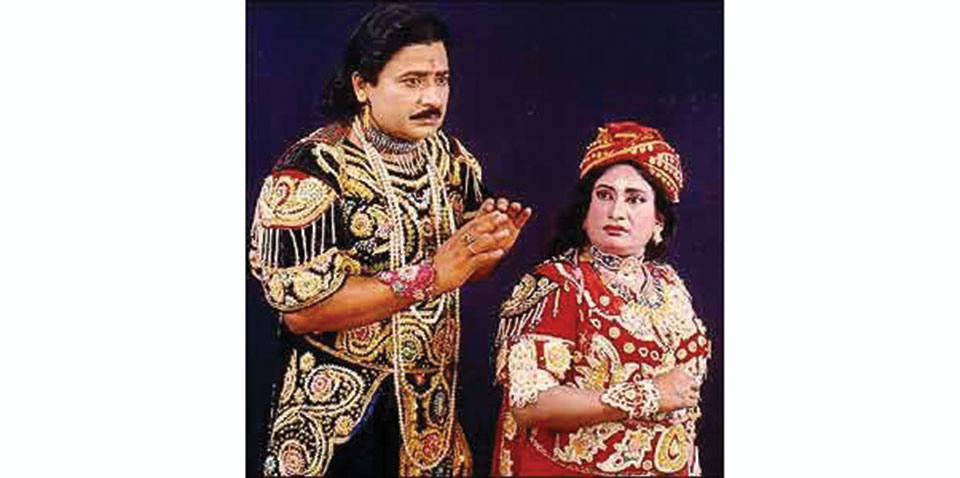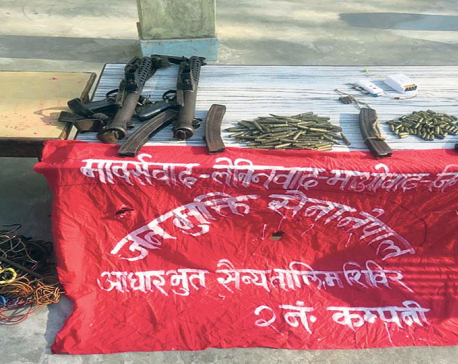
OR


Usha Pokharel
Usha Pokharel is an educationist and author of several children’s books.usha@pokharel.net
Every Jatra had an allegorical figure called Bibek who commented on actions of actors and their consequences
I can see a few raised eyebrows just reading the word Jatra. Some might be thinking, ‘what is there to write about it?’ Well, Jatra comes from Yatra meaning procession or journey in Sanskrit. It also refers to different types of Newari festivals. Similarly Jatra is a popular folk form of Bengali theater, spread throughout most of Bengali speaking areas in the Indian subcontinent including Bangladesh and Indian states of West Bengal, Bihar, Assam, Orissa and Tripura. Now you must be thinking, ‘so what? Why are you writing about it?’ Well, the connection is related to my visit to Varanasi.
My recent trip to Varanasi after 38 years and visiting the old family house my family and I lived in for a long time, brought back plenty of memories. One of them was our going to watch Jatra during the evenings after dinner after Dashain. At the time it was one of the fun things available for entertainment free of cost. You will be surprised to know that currently Jatra is 21million dollars a year industry, and employs more than 20,000 people, more than the local film industry and urban theatre combined. Now that I have raised your curiosity, let me tell you a little about it. So that you get a background of what I am talking about and also see the similarity and difference between the Jatra as we know and the Jatra I am mentioning about.
Jatra and public space
Traditionally, Jatra, as a musical theater is traced to 16th century and is credited to Sri Chaitanya’s Bhakti movement, especially Krishnaism. Jatra evolved from religious processions (yatra) of devotees, moving from one place to another, singing and dancing to the tunes of kirtan. Often accompanied by artists, proficient in singing and dancing, Jatra existed at a time when there were no theatre houses or fixed stages in Bengal.
Urbanization brought Jatra to the urban areas, with the inclusion of literary works. It also brought literary works to the predominantly illiterate rural masses, keeping the plot, storyline and narrative very simple. In the 19th century, Jatra format changed again with the introduction of dances. This became a dominant feature of Jatra in the coming years. Along with this, prose dialogues and free verse speech were also introduced. During the early 20th century, at the onset of the Indian independence movement, Jatra became a vehicle for political satire and protest. Despite everything Jatra remained a living tradition of musical theatre with its revival during the early 60s to its natural form.
Getting back to my memories, I remember walking to see the Jatra and hearing the musicians singing from a distance. This musical treat continued for almost an hour, after we were seated. I realized this was a form of advertising to attract more audiences. The actual play started after the musical treat and lasted for almost four hours. Being a literature student at the time, I found yet another distinct feature of Jatra. The play begins with the climax, a device used to captivate the attention of the audience. The performance had a good mixture of dramatic monologues, songs and duets, along with dance routines on folk tunes that often served as scene transitions and sometimes also marked the end of an act.
I remember Jatra being performed on open stage marked and separated from the audience by just a gap of empty space in between. This area designated for the play often had very little to no furniture or props. To me it felt like a neutral space justifying the name Jatra. I noticed something special about the cast of the Jatra.
The cast was predominantly male often playing the part of females. Later on I could see some females also participating in the play. I was fascinated and wanted to know more about it. Upon some inquiry, our old neighbor, who we fondly called ‘Jetha Mosai’, introduced me to the cast members. They told me that the actors joined the Jatra group at a young age and worked their way up the hierarchy of roles and their passion for acting. In the absence of microphones the actors had to reach the audience using their thundering voice for dialogue deliveries. Apparently, the judging of the apprentice also largely depends on their vocal ability and their ability to improvise a dialogue should there be a need.
I remember music being the key element of Jatra. The actors themselves did most of the singing. The musicians sat on the two sides of the area marked for performance with their instruments: Dholak, pakhawaj, harmonium, tabla, flute, cymbals, trumpets, violin and clarinet. All these instruments heightened the overall dramatic effect of performances that were already frenzied. I realized most of the songs sung were based on classical ragas. There is one very interesting aspect that is unique of Jatra I want to mention here. This is something I still remember after such a long time.
Meaning and message
Every Jatra had an allegorical figure called Bibek (conscience). Its basic role was more like a guardian: commenting on actions of actors and their consequences. Sometimes it even elaborated on the feelings of different characters. Often it stepped into a scene unannounced and presented an alternate or philosophical point of view. All this was done through singing. This reminded me of the role of ‘chorus’ in Greek tragedy (a form of theatre from Ancient Greece and Asia Minor). At the time I was doing my masters and Greek tragedy was something I studied. Very similar to Bibek there was another character called Niyati (fate). Usually played by a female cast member, Niyati’s role was to comment on the scene and foretell or warn the actors of impending dangers.
The Jatra season began around Durga Puja in September. Logically that made perfect sense to me, as that is the beginning of harvest season, when the travelling troupe headed out to the interior rural regions to entertain the farmers after they have harvested and stored their grain. Similarly Jatra season ended around June right before the arrival of Monsoon rains, again with the beginning of the planting season. It made perfect sense to me.
I always liked different cultures and their presentation. I am glad I got the opportunity to learn and experience different cultures while I was growing up. I knew about the different Jatras in Nepal, but a Jatra from Bangal was different. Now that I was reminded of it one more time, I thought of sharing it. I wanted to share it so that others also would read it and appreciate it for what it is. I feel it is always a good idea to give different cultural exposure to your child. It widens your child’s creativity and imagination and respect for other cultures too. Exposure of children to other cultures is a very good learning experience that also teaches them cultural tolerance and appreciation of it. Now that, I think, is a good idea. What do you think?
Pokharel is an educationist and author of several children’s books
usha@pokharel.net
You May Like This

Amazon confirms two employees in Italy have contracted coronavirus
WASHINGTON, March 2: Amazon.com Inc said late on Sunday that two employees in Milan, Italy, have contracted the coronavirus and... Read More...

Govt restricts Chand group’s activities
KATHMANDU, March 13: The government on Tuesday outlawed the ‘political activities’ of the semi-underground Communist Party of Nepal led by... Read More...

President calls for modernization and updating of Sanskrit
CHITWAN, Feb 5: President Bidya Devi Bhandari has spoken of the need of making the Sanskrit education timely and modernizing... Read More...





Just In
- MoHP cautions docs working in govt hospitals not to work in private ones
- Over 400,000 tourists visited Mustang by road last year
- 19 hydropower projects to be showcased at investment summit
- Global oil and gold prices surge as Israel retaliates against Iran
- Sajha Yatayat cancels CEO appointment process for lack of candidates
- Govt padlocks Nepal Scouts’ property illegally occupied by NC lawmaker Deepak Khadka
- FWEAN meets with President Paudel to solicit support for women entrepreneurship
- Koshi provincial assembly passes resolution motion calling for special session by majority votes






_20220508065243.jpg)






Leave A Comment